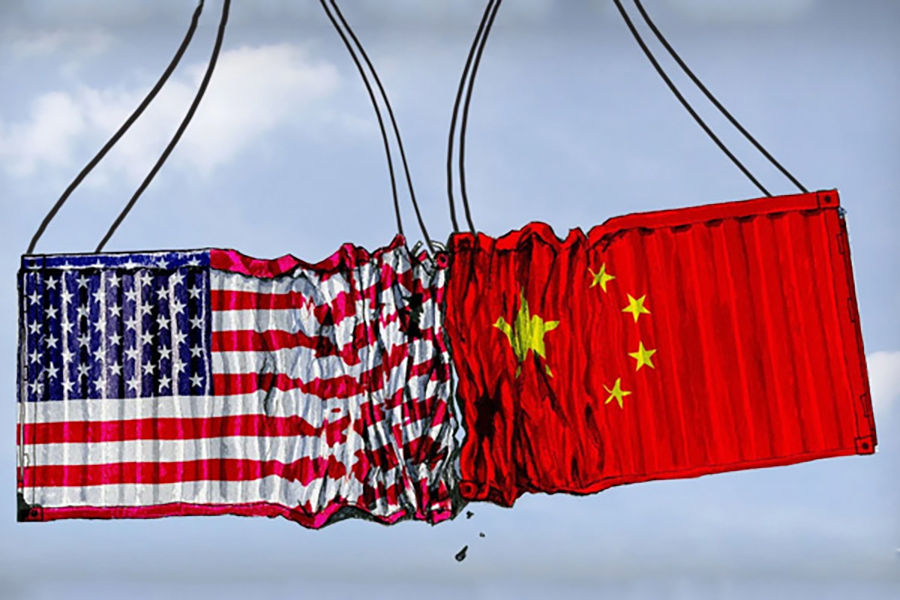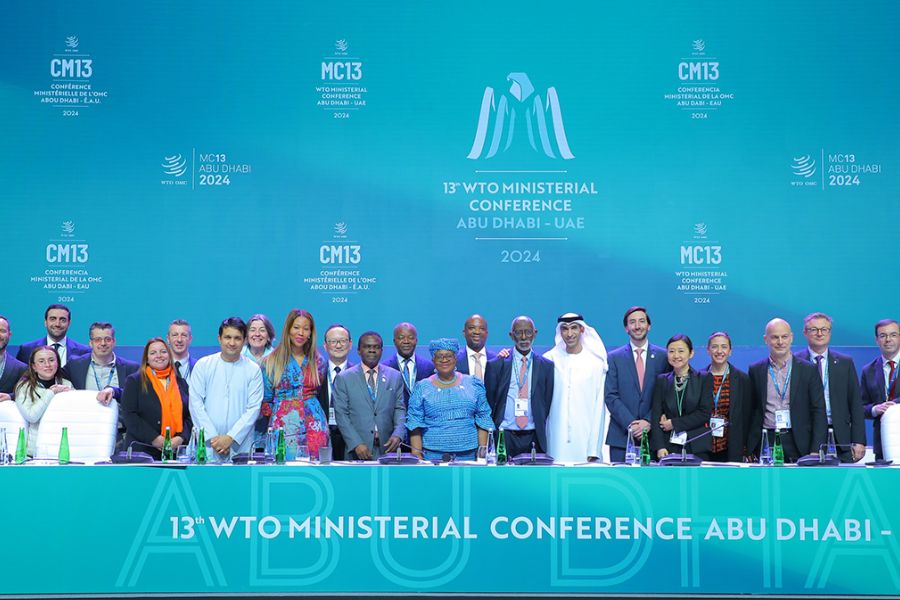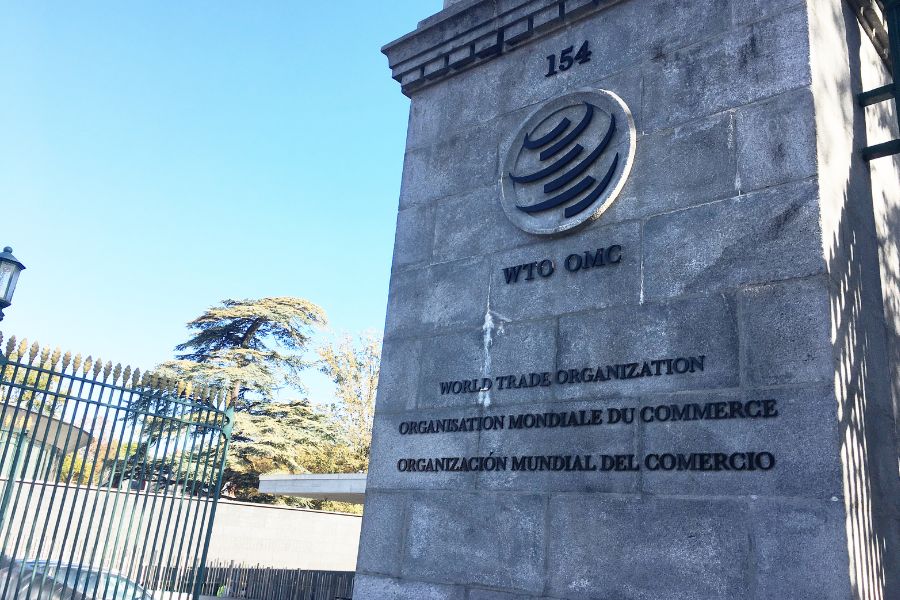Foreign trade policy should focus more on vision for trade
Dr Arpita Mukherjee, Professor at ICRIER, proposes a step-by-step framework for India’s Foreign Trade Policy, where India should look at success stories from other countries, make subsidies WTO-compliant, and focus on market development, competitiveness and efficiency, as opposed to incentives.

IBT: What have you observed as the most transformational changes in the global trade environment during the previous Foreign Trade Policy that was 2015 to 21?
Dr Arpita Mukherjee: Overall, the global trade environment has become more difficult since the previous Foreign Trade Policy. At the time of the previous Trade Policy, WTO was fairly well performing, so you had a place to go to in case of a problem. But the WTO has been rather de-functioned now. Additionally, if you see that in spite of the US-China war, USTR has recently taken out data, which shows that India’s exports to the US between January and November 2020 declined by 13.3%; while for China, the decline was lower at 5.8%. On the other hand, exports for Vietnam grew by 19.5%.
So you know, countries which have signed trade agreements have been able to build a more predictable trade environment and regime. Those countries seem to be doing well in our key export markets like the US and the European Union.
IBT: Coming to India’s performance vis-a-vis peer exporting countries, what do you think have been the strong points as well as areas where you feel probably Indian exports could have done better?
Dr. Arpita Mukherjee: India has a lot of STEM capabilities that we can harness for automation. We also have manpower and the real worries of companies with the supply chain being too integrated into China give us an opportunity. This is evident when you look at the partnerships we are exploring with Japan and Australia, as well as being a part of supply chain diversification. The other opportunity is that the government has liberalised the FDI regime, and it is also attracting foreign investors through schemes like PLI. So when they invest, they will cater both to the domestic market and exports.
On the other hand, I would say that there is scope for improvement in the Foreign Trade Policy by moving away from export-linked incentives. We have to make our incentives WTO-compliant. I think that is the biggest challenge, as export linked incentives like MEIS are easy to give and claim. However, they are prohibited under the WTO and can be countervailed by the importing country.
The other challenge is that we do not have enough incentives for technology upgradation, modernisation and increasing trade competitiveness. MEIS subsidies are easier to claim, and the industry has actually asked for them. But they do not help in any competitiveness improvement or value addition like R&D or technology, which are now needed. At the same time, you know, while the ease of doing business has improved, logistics costs are very high.
In fact, my study shows that exporters face more barriers than importers in India. Imports are restricted now by rigid measures. But importers as such have lesser number of bodies controlling them. Let me give you an example. If I have to export organic spices, I have to go through APEDA as well as Spices Board and in certain cases EIC. Why can’t we have a consolidated export control agency?
The same product will go through different laboratories of these different agencies for different types of testing. We have limited laboratories for exports (mostly below 20) for each of these agencies for exports, while we have all 121 approved FSSAI laboratories for import. This issue has to be handled.
IBT: You talked about some of the schemes, which have become non-WTO compliant – export oriented units, EPCG, SEZs, duty-free imports for exporters and most importantly, I would say RoDTEP, which is supposed to replace MEIS. A lot of exporters are trying to understand what it really will bring and what the provisions will be like. What suggestions would you like to offer to the government as it replaces these traditional schemes?
Dr Arpita Mukherjee: A number of countries like Vietnam have already focused on overall competitiveness improvements through their policies. The production-linked incentive scheme is a good step, and it looks into 13 sectors. But it is only for the larger players. There is no scheme today, which enables a smaller player to grow in size. So you are either an SME, and you get certain benefits, or you become a large firm and are eligible for some benefits. But there are no benefits, which allow the smaller firm to scale up and become competitive.
I would also say that incentives need not be given under a Foreign Trade Policy, as it then looks like a direct export-linked incentive. In broader terms, countries are not giving incentives under the Foreign Trade Policy, they instead give a vision. And if you give an incentive, it should be non-actionable/WTO compliant, like incentives to services used in manufacturing. With increased servicification of manufacturing, the manufacturing sector can be supported by giving incentives to services used in manufacturing. It can be subsidizing the logistics cost for instance, because there is no discipline on services in the WTO. The same goes for training of workers as well as using more technologies like AI and machine learning. So you have to be more innovative in your incentives and make them WTO compliant.
If it is not completely compliant, we need to go into the grey areas, rather than directly giving prohibited or actionable subsides. It can be subsidies to SMEs or for R&D. For SEZs, you can change the incentive clause from net foreign exchange earning to clauses like investment-linked incentives, employment-linked, technology transfer or technology upgradation.
IBT: One of the things that have been talked about is how to synchronize the promotion of trade and investment. So how can the Foreign Trade Policy balance these? What is the lack of synchronization which we need to address and how?
Dr Arpita Mukherjee: At an institutional level, this synchronization is very simple. When there is a coordination between the foreign investment department, that is the DPIIT and the trade department, which is the Department of Commerce, then policy can be synchronised. In the case of SEZs, when I go back to the problem of the previous years, the Foreign Trade Policy had a chapter 3 and a chapter 4 benefit. That benefit together was more than the benefit under the SEZ policy, which presented them with an existential dilemma.
Investment, especially FDI, is a big decision. Foreign companies first see the market potential and growth, if they want to do a market-seeking investment. The barriers that we place to test marketing will impact investment. In food imports, for instance, we place the maximum barriers, so you will see that we have limited investment in food processing. Technology firms have lesser barriers, so you see the greatest investment in technology over the last few years and services firms have always attracted investment.
Now let us come to the next point. Sometimes investment happens, like in the case of the automobile sector, when the market is otherwise closed for imports. Therefore, we have to identify sectors. We have enough years of experience in attracting trade and investment, so we should isolate and identify sectors where investment happens when the market is closed.
Then there are sectors where investment happens when the market has to be rather open, like agro-processing. Even if I have to manufacture tea, I need Darjeeling tea along with a lot of imported ingredients, many of which will be coming from the ASEAN nations and eastern part of our world. Therefore, if we put barriers to imports, then we will not be able to set up processing units. If we put barriers on imports of oranges from Brazil, we will not be able to process oranges. Even Indian companies will go to Sri Lanka and process. So, we have a lot of past experience on what to do and what not to do.
The third type of exports, which India rarely gets is to be a part of the foreign investor’s global value chain. Now we have to create an atmosphere to attract investment to become a part of value chains of global companies by removing trade barriers and through ease of doing business and implementation of technology-based risk management and trade facilitation measures.
Here, I also want to make a point. If you are manufacturing in an SEZ and sending it to the domestic market, you face a higher unilateral tariff then under the FTA. India has over the years, increased tariffs. Under the Foreign Trade Policy at least you give your SEZ, the same level of tariffs that you give under your FTA, then you will see a difference. We also need to seriously evaluate the benefits of allowing reverse job work from SEZs, especially at a time when exports are suffering.
IBT: How has the environment changed post-COVID, and how should it reflect on the Foreign Trade Policy in your view?
Dr Arpita Mukherjee: Post-COVID, the trade initiatives that are being given by the countries are to improve competitiveness and access to the market for vulnerable groups like SMEs in the case of India. Furthermore, the direction is towards more sustainable trade practices like better standards and quality, women in trade, lower use of chemicals and organic trade, etc.. Further, businesses will look towards using more technology, like B2B e-commerce platforms, virtual interactions, etc. These will continue because they are cheaper to do.
But you know, a virtual summit in itself does not add any value, because your physical interaction is much more valuable. The virtual summit adds value when you associate it with other things like a go-to market strategy report and all support you need to go from physical to virtual market access. One of the biggest things that foreign trade can do, and foreign trade policies of other countries do, is to help companies gain competitiveness and develop markets.
We need to investigate through research why are we not able to meet competition in key markets like the European Union and the US? We need to do a lot of investigation through research and survey the foreign trade policies of other countries. This can help us to understand not only why are we not doing well, but also how we can do well.
The second thing is exploring new markets. Now you have markets in Africa, Latin America that you want to access. This requires facilitating companies on how they should go there and what kind of tie-ups they should be doing. Initially, I think the first year of the new Foreign Trade Policy, we should actually find out how we can do certain things. The next step should be a roadmap for the next two years. The third and fourth years should be actually aimed at benefiting from the last two years.
So Foreign Trade Policy itself should have a roadmap. At this stage, we should look into some other country examples, design policies, make subsidies WTO-compliant, focus on market development, competitiveness and efficiency (as opposed to incentives). Incentives were needed when corporate taxes were higher, and incentives will be needed when ease of doing business is lower. We need to address these two issues – have a transparent, simple and low tax regime and enhance competitiveness through ease of doing business and trade facilitation. The Foreign Trade Policy should focus on trade facilitation.
Dr Arpita Mukherjee is a Professor at ICRIER. She has several years of experience in policy-oriented research, working closely with the Government of India and policymakers in the EU, US, ASEAN and in East Asian countries. She has conducted studies for international organizations such as ADB, ADBI, ASEAN Secretariat, FCO (UK), Italian Trade Commission, Konrad-Adenauer Stiftung (KAS), OECD, Taipei Economic and Cultural Centre (TECC), UNCTAD and the WTO and Indian industry associations such as NASSCOM, FICCI, IBA, IDSA and EICI. Her research is a key contributor to India’s negotiating strategies in the WTO and bilateral agreements. The views expressed here are her own.













Leave a comment